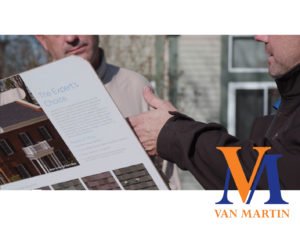Dayton Roof Replacement Process: The 5 Steps
 Dayton Roof Replacement Process: The 5 Steps
Dayton Roof Replacement Process: The 5 Steps
The Dayton roof replacement process is much more complex than it may seem. Any experienced roofing contractor in Dayton knows that it is not just tearing off the existing roof and replacing it with a new one. But before any home or business owner can go forward with this home improvement project, they must take costs into account.
Costs will vary from contractor to contractor, but the real factor in roofing cost is the materials used, pitch, and square footage of the property. Each material varies in durability, longevity, and specialization. So naturally, they vary in cost as well. Asphalt shingles are very common and may seem like an economically good idea, but they don’t last as long compared to other materials and can be easily damaged.
Metal shingles and materials on the other hand are able to withstand very severe winds and storms, are able to last longer and require less roof maintenance. However, it is true that they are more expensive per square foot when compared to asphalt shingles. Below we’ve listed common pricing for a smaller home with a standard pitch:
- Asphalt Shingles: $7000-$12,000
- EPDM: $8000-$14,000
- Wood Shingles: $14,000-$25,000
- Steel Shingles: $14,000-$25,000
- Standing-Seam Steel: $23,000-$30,000
- Concrete Tile: $20,000-$40,000
- Clay: $25,000-$50,000
- Natural Slate: $25,000-$50,000
The Replacement Process
Once the material is decided on, naturally, the next step is the actual replacement process. The replacement process may take a few days or a few weeks. Once again, it depends on the square footage of the property, type of roofing system, pitch or slope, and the materials being used. By learning the steps involved in an adequate roof replacement, one can understand the needs of their home better.
1. Preparation
During this stage, roofers will take all the necessary precautions and steps before they can begin the replacement process. The driveway should be cleared for the hauling trailer or roll-off dumpster. Any breakable items, such as flower pots, wind chimes, or toys should be removed and placed in a safe spot for the time being. It’s better to be on the safe side when it comes to roofing.
Speaking of safety, all contractors on-site should have the necessary equipment and gear to ensure they are able to remain secure during the project. This includes industry-standard work gloves, boots, a safety helmet, and a harness.
2. Removal/Repair of Existing Structure
At this point, all pre-existing layers of shingles should be removed from the roof. Whether it’s a residential or commercial roof, all pre-existing materials should be taken off the edge of the roof, and safely disposed of in the aforementioned hauling trailer or roll-off dumpster.
Once all of the old layers of the roof are safely removed and disposed of, the structure underneath should be examined thoroughly. Any experienced contractor could also be considered a “roof inspector”, therefore they should be able to determine whether or not roof repairs are needed on the structure. A whole new roof will be laid atop of it, so they’ll want to make sure it’s sturdy enough to handle it.
3. Installation of Flashing
The next step is the installation of proper flashing. Flashing is to be applied around all areas of the roof that are most prone to leaks and water damages. The chimney should always have flashing around it installed.
In addition to the flashing, a drip edge is used by some contractors. It is installed around the perimeter of the roof, which permits water to flow further from the property.
4. Underlayment and Roofing Materials
We’ve now reached the roof replacement process. Contractors on site will start to spread out “underlayment.” Which is used to keep any rain or moisture away from your roof’s wood decking material. Once the underlayment is laid out across every square foot, the new material can be installed.
Whether it’s metal, EPDM or asphalt roofing, every material should be installed from the eaves to the peak. As a result, the roof will take on a more uniform look, and look much better from the curb.
5. Cleanup and Final Inspection
After everything is put into place, a good contractor will leave the site as they left it. Everything single nail, shingle, tool, and debris should be taken care of by the contractor. It would not be fair to the building owner to clean up after those they hired.
Once there are no more traces of the replacement, a final roof inspection should be done. A project manager or someone similar should do a final walkthrough of the property, ensuring the contractors on site truly delivered the best work.
Finding the Right Roofing Contractor
The Dayton roof replacement process is complex, so you’ll want an experienced contractor. When looking for a good, solid, reliable roofing company in Dayton, Ohio, visit us at Van Martin. We provide all new and current clients free roof inspections and will deliver the best service and labor as well. Call us at (937) 222-7855, or schedule a free roof evaluation online.
Van Martin is proud to announce plans to open new locations in Vandalia and Centerville, so we can bring our reputable services to you.


